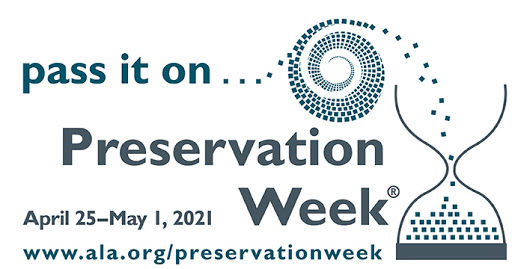The archival material in your collections can deliver wonder visually. If you work with archives and special collections, exhibition is one of the best ways for you to market and provide access to those items. If exhibition isn’t something you are doing in your law library, let us know what’s keeping you from doing so in the comments. Perhaps you are a lone arranger and don’t have the time. Maybe you lack the required tools. Or maybe you are limiting yourself to the idea that an exhibit must be a physical one.
Physical exhibition had long been a primary promotional tool for Archives and Special Collections at the Daniel F. Cracchiolo Law Library. The move to remote work last year provided the Law Library the opportunity to market its archival material via online exhibits. Several exhibit cases were used to rotate material on exhibit or rotate exhibits entirely. Still, online engagement with the community was lacking as far as exhibition. Enter Google Slides.
To spotlight your archival holdings, facilitate collaboration, enhance visual appeal, and publish to the web, Google Slides is a good tool. Last year, the Cracchiolo Law Library created two on-line exhibits using Google Slides: Ruth Bader Ginsburg: In Her Words and Rising from the Red. The first exhibit, In Her Words, was created by Law Library Fellow Alex Clay Hutchings (with Collections Management Librarian Jessica Ugstad) and their work inspired the second, Rising from the Red, which I created.
One way I chose to enhance my presentation and spotlight one of the Law Library’s archival objects was to use images as slide backgrounds. This allowed me to exhibit a physical object and the inscription found inside virtually (see slide 23 of Rising from the Red for an example).
There are various tutorials available online to learn how to create and enhance a Google Slides presentation. “Getting started with Google Slides” and “Add or change animations and transitions” are a good place to start. Additionally, a search of the phrase “how to create a google slide presentation” via YouTube will provide a number of useful results. Have any of you used Google Slides to exhibit your archival holdings? Did you enhance your presentation in any way? Let us know in the comments.
LIPA intends to further its outreach efforts this year and as a new Member-at-Large on the Board, I am here to help assist with that effort. My name is Jaime Valenzuela and I am an archivist at the Cracchiolo Law Library. In particular, we at LIPA are interested in establishing a greater connection with LIPA points of contact. If you are that point of contact, feel free to reach out to me or Michelle Trumbo, LIPA’s Executive Director, directly. If you are looking to get more involved with LIPA or to see what we have been up to, please join us at our Annual Membership Meeting on Wednesday, July 28, from 1:00 pm to 2:00 pm ET. For those unable to attend, please feel free to reach us via the LIPA Contact Page.

